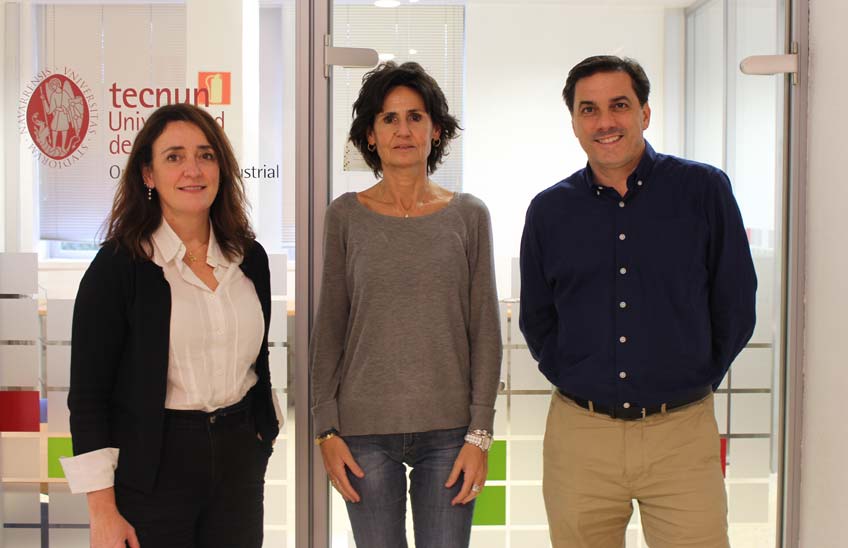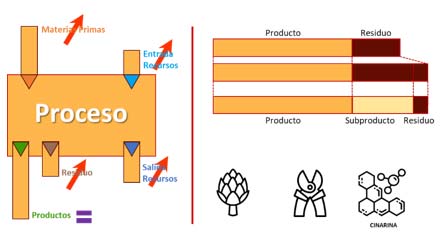09/11/2021
Published in
The Conversation
Javier Santos, Elisabeth Viles and Carmen Jaca |
department Industrial Organization. Tecnun- School of Engineering of the University of Navarra.

The Economics Circular represents a paradigm shift in the way society is interrelated with nature. It seeks to avoid resource depletion, close energy and material loops and facilitate sustainable development . It began to be developed in 1980, but it was not until 2012 when, through the Ellen MacArthur Foundation the term became popular.
There is no doubt that today companies, supported or pushed by government institutions, are making great efforts to move from a linear economic model to a more sustainable one. The goal is that resources and materials are kept in the supply chain as long as possible, so that the Earth is regenerated while seeking a balance between economic progress, social and environmental development necessary for the welfare of citizens. However, it is not so simple or obvious to get it right.
If we go back to the beginning of the 20th century, 1913 marked the beginning of an era called Fordism, inspired by Ford's assembly line and based on chain production and the mechanization of work with specialized labor. This production model was replaced by Toyotism in the 1970s. It was later baptized in the West as Lean Manufacturing. The principles of Lean are based on the identification of value and the value chain for customers. internship Since its inception, the most common way of applying these principles has been to focus on waste, i.e., on what does not add value, and, using simple tools and work as a team, to try to eliminate or reduce it. This is the basic idea of almost all the improvement systems currently in operation in companies.
This concept of "Reduction" has been implicit in the very definition of Lean and, nowadays, many of the corporate sustainability strategies are oriented towards the reduction of consumption or raw materials. And that's not bad. However, Reduction is only one of the "Rs" associated with Economics Circular when it is in "Rethinking" where the real paradigm shift lies.
Here are some examples. With a business strategy focused on reducing resources, some factories are implementing systems aimed at reducing the amount of water sent to the treatment plant. This reduces consumption in the production process without reducing its quality and, as a result, improves the factory's productivity indicators. However, this solution may not be sustainable for the plant in social and environmental terms. Let us imagine that the pollution load per liter of water would increase due to this reduction.
Other strategies seek to valorize the waste they produce by giving it a new use and trying, in turn, to reduce the impact generated by this waste in their factories. For example, in the food sector, thanks to the development of new biotechnologies, business models are being explored linked to new products that can be extracted from the current residues of these raw materials. In some cases it has been seen that these businesses cannot be carried out because the Issue of waste currently generated is not sufficient to start up the transformation process. In these cases, could it make sense to increase the use of these raw materials in factories to minimize the net use of raw materials with a more holistic view of the entire value chain?
Another possible path is industrial symbiosis. This strategy contemplates the partnership between companies, so that the "waste" of one can be "food" for another. But why do we settle for the resource obtained from one company's process and not make a joint design ? Suppose a business uses water in its production process and, prior to treatment in the treatment plant, the nutrients dissolved in the water from washing vegetables can help improve the yield of nearby crops. Could the farmer use that water? Or what would happen if the industrial business were to increase its consumption by adding the water used by the farmer to its process? In this case, once used - possibly with a higher yield of its processes by increasing the flow rate - it would sell it to the farmer at a price that could be even lower than what the farmer would pay at source.
We see that what the Economics Circular is proposing is a radical change of approach to what we usually do. It will not be enough to make small adaptations if we continue doing what we always do. We must focus on the "R" of Rethinking, even if it is not simple or immediate. Neither was the transition from Fordism to Toyotism, but today continuous improvement cannot be understood without these principles. And adapting our production to a Sustainable Circular Economics is a necessary change, that well understood and assumed, will be appreciated by future generations.

Figure: Rethink. Increase to valorize.
This article was originally published in The Conversation.
![]()
